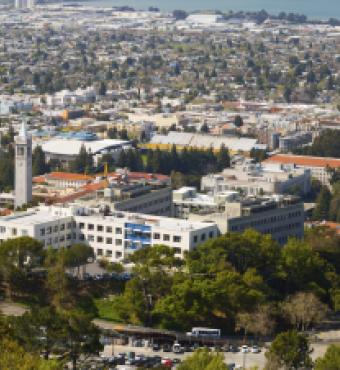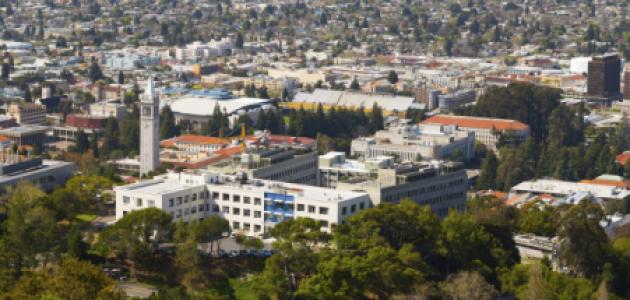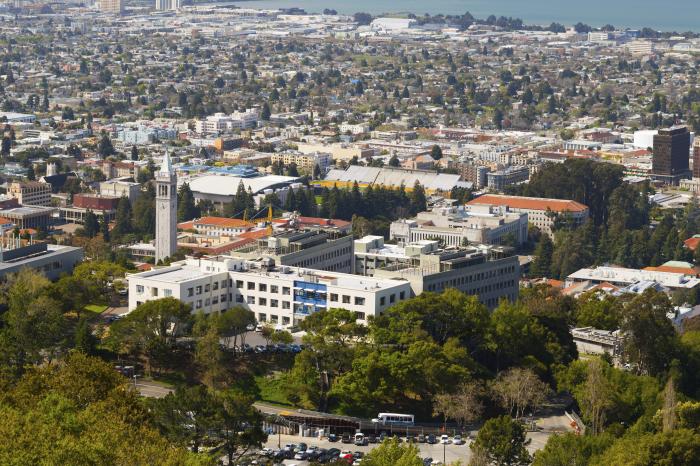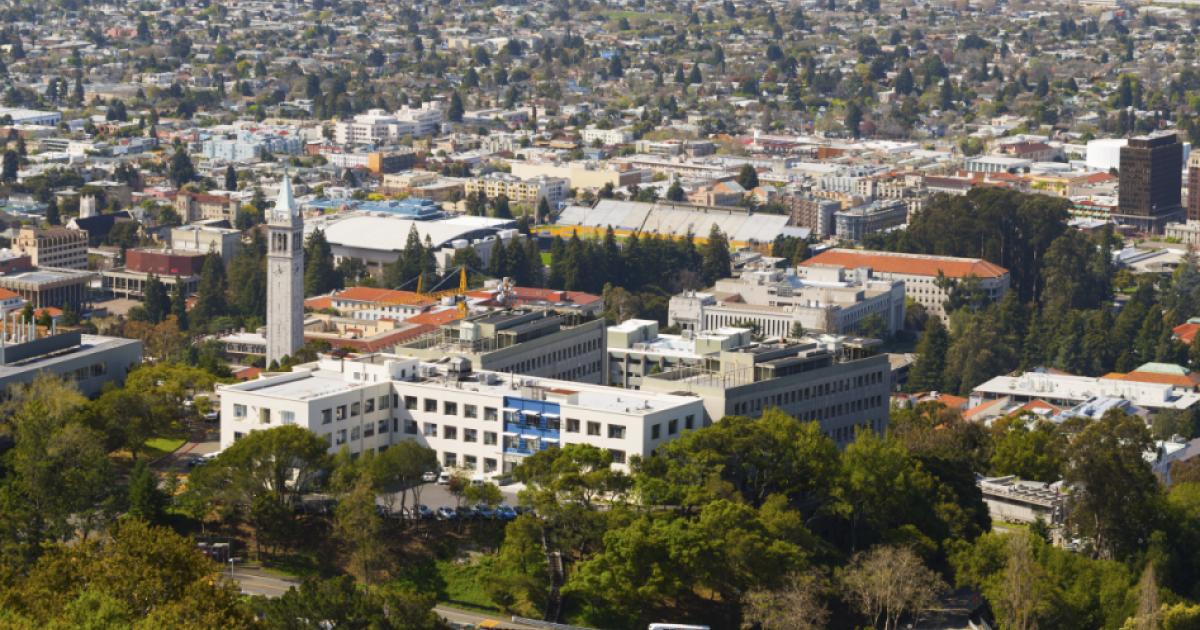- Education
- Politics, Institutions, and Public Opinion
- State & Local
- California
Regions of America have their collegiate rivalries, Northern California—the home to Stanford University and the University of California–Berkeley—being no exception.
The two schools embody academic excellence. Otherwise, it’s an oil-and-water comparison. Cal-Berkeley is arguably America’s preeminent public university, whereas Stanford is one of the nation’s most elite private institutions.
There’s also a difference in lifestyle. Stanford loyalists mock Berkeley’s counterculture and liberal permissiveness. Berkeley supporters liken Stanford—aka “The Farm”, as it sits on the grounds of a 19th-century stock farm used for horse breeding and training—to pastoral entitlement. Here’s an example, from a Daily Cal article of a few years ago:
Leland Stanfurd [sic] had a farm, e-i-e-i-o.
And on this farm he built a school, e-i-e-i-o.
With a snob, snob here, and a snob, snob there,
Here a snob, there a snob, everywhere a snob, snob.
Leland Stanfurd had a farm, e-i-e-i-o.
But maybe the greatest difference of all between the two schools: geographical footprint. Stanford sits on 8,800 acres of land midway between San Francisco and San Jose, which translates to roughly two students per acre, whereas Cal-Berkeley is home to 45,000 students (nearly 32,000 of them undergraduates) in an urban setting confined to but 1,230 acres.
And therein lies a big problem for Cal-Berkeley: precious little room to grow, which is at the heart of last week’s California Supreme Court decision that the university has to cut back on admissions due to an inability to provide enough on-campus housing for its growing enrollment.
How to make sense of this situation, other than that it underscores the perils of trying to run a mega-sized university in the heart of a densely populated town?
First, it raises the question of where the first cuts would occur.
University officials have cautioned that they might have to pare back this fall’s incoming class of freshmen by one-third (about 3,000 slots). However, the school could try some smoke and mirrors—offering students remote instruction or deferred enrollment (waiting for space to free up after winter graduation plus travel-abroad programs). Indeed, the university last week painted a rosier picture in which the admission cuts run in the hundreds, not the thousands.
Still, which group of applicants would take the hit?
Berkeley could say no to fewer transfer students (last year, the school witnessed an 8.7% increase in such applications, from roughly 20,400 to 22,200, and a 22% acceptance rate). But paring back transfers strikes a sour aspirational note—i.e., hard work at a less prestigious school may not pay off in terms of entry to the flagship of California’s vaunted UC system.
Or, a second option: Berkeley could target its out-of-state admissions—already a popular choice for state legislators who last summer agreed to make way for additional native-born California students by removing 4,500 out-of-state slots over five years.
The problem with doing away with out-of-state admits: money. At Berkeley, one fewer out-of-state student means almost $30,000 lost annually in so-called nonresident supplemental tuition. That might not seem like much considering California governor Gavin Newsom’s proposed budget includes a $200 million General Fund increase for the UC system for next year. Then again, just how much money there is to pass down from Sacramento is anyone’s guessing game until a revised Newsom plan, readjusted for April tax receipts, comes out May.
(If you’re thinking that yet one way to spare kids from the pain of not getting into Berkeley would be to discourage applying: good luck. A record 112,800 students applied for admission in the fall of 2021—perhaps not coincidentally, after the UC schools eliminated SAT/ACT scores from the admissions process last spring).
There’s a third way to help UC-Berkeley through its geographical woes, but if recent history is any indication it’s about as unlikely as Cal and Stanford gathering in a group hug: reform the 1970s-era California Environmental Quality Act, which was used by local activists—in this case, Save Berkeley’s Neighborhoods—as the legal justification for preventing the university from expanding its student population (the logic: more students means more pollution, more environmental damage, and a greater strain on Berkeley city services).
Loyal California on Your Mind readers might recall this column lamenting the lack of CEQA-reform progress during the gubernatorial rule of Jerry Brown, Newsom’s predecessor.
Long story short: the column notes the inability of seven California governors to make CEQA less pernicious but singles out the pragmatic Brown’s inability to pull off grand-scale reform (unions use the threat of CEQA-based lawsuits as a means to extract more money from developers by threatening to tangle up construction projects in court; concerned citizens use it to prevent the likes of needle-exchange programs).
Credit Brown with being blunt in this 2016 interview: “The unions won’t let you [reform CEQA] because they use it as a hammer to get project labor agreements. The environmentalists like it because it’s the people’s document that you have to disclose all the impacts. And, of course, the developers have a problem because ‘impact,’ boy, that’s a big word. Everything’s an impact. I pound on the table, that’s an impact [pounding on the table]. You know what I mean?”
Newsom, now in the final year of his first term, hasn’t been so melodramatic when talking about CEQA. To his credit, he’s shown a willingness to work around the law’s conference—in May of last year, for example, signing a bill that fast-tracks CEQA review for development projects statewide.
California’s governor was not a sideline participant during Berkeley’s university-neighborhood squabble, in February filing an amicus brief on behalf of UC regents. (“Thirty-two UC Berkeley alumni have received Nobel prize awards and the campus’ graduates make valuable contributions to vital Californian industries every day, including technology, healthcare, justice and climate change research,” it reads. “Reducing enrollment by thousands of students will not only harm these students and their families, but California will miss out on the public good that these potential students could have offered through a UC Berkeley education.”)
The question now: Will Newsom make CEQA a policy priority in this, an election year for himself and other California lawmakers?
While a recently introduced State Senate bill would exempt on-campus student and faculty housing on the campuses of California public universities from CEQA, will the Democratic supermajorities that control California’s two state legislative chambers risk running afoul of at least two notable Democratic special interests (unions and environmentalists) by digging deeper into the 50-year-old law?
Then again—and again, it’s an election year for lawmakers—this isn’t a traditional battle, in which progressive lawmakers would fear being seen in cahoots with deep-pocketed developers. This comment by Newsom sums it up neatly: “We can’t let a lawsuit get in the way of the education and dream of thousands of students who are our future leaders and investors.”
Translation: do it for the kids (not the developers).
There’s one other way to parse the governor’s words, though I remain a skeptic: the man’s been mugged by reality.
It’s a trendy thing to say in the aftermath of Newsom’s unveiling of a CARE Court proposal (Community Assistance, Recovery, and Empowerment), which would take the portion of California’s homeless population with untreated psychotic and abuse disorders off the street and place the individuals under court-ordered treatment for up to two years.
The idea smacks of a governor, who made homelessness the centerpiece of his 2020 State of the State Address, saying in essence “enough is enough” (among the frustrations in getting to the heart of homelessness in the Golden State: it’s difficult to estimate California’s homeless population). But will Newsom stand his ground against likely pushback from mental-health advocates who prefer voluntary care to institutionalization?
Perhaps Newsom is able to convince lawmakers to see his way on homelessness (for the governor and his fellow Democrats, a topic that yields lousy poll numbers).
If so, can Newsom et.al. see their way to a large-scale CEQA fix?
Don’t bet your tuition money on it.
















